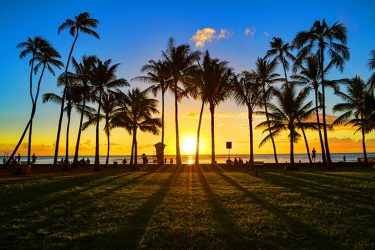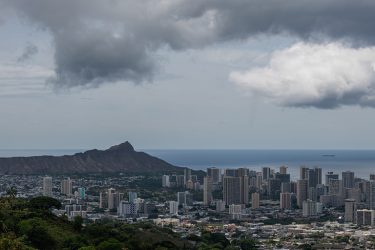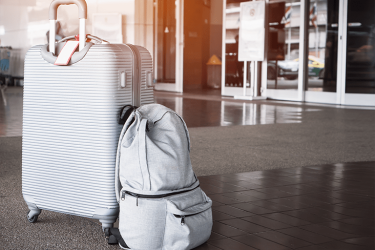Waikiki Weather by Month: Best Season & Packing Tips for Your Trip
Pack your swim suits, because you’re in for year-round beach weather!
Hawaii is fortunate to experience comfortable weather throughout the year. With mild changes in temperature and minimal scattered rain showers, it’s an ideal place to visit regardless of the season.
Speaking of seasons, Hawaii generally has only two – summer and winter. Summer occurs during the months of May through October, where winter is November through April.
Why Waikiki Weather is Ideal for Travelers
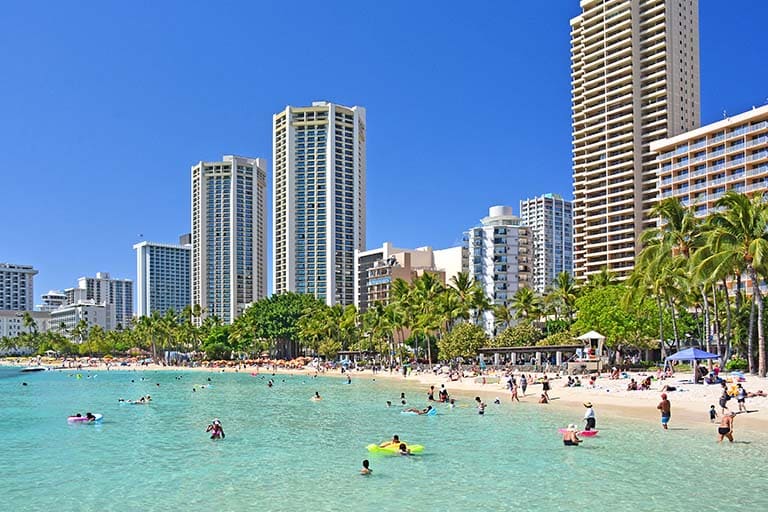
Waikiki’s position on the south shore of Oahu brings great benefits in terms of weather. Due to its location on the Leeward coast of Oahu, the Koolau Mountain Range protects it from the wind and rain entering from the northeast of the islands.
This northeasterly wind, commonly referred to as the trade winds, results in the perfectly dry and sunny weather for beach days. Occasionally the winds switch directions from the south, known as the Kona winds, bringing in hot and humid weather.
Month-by-Month Weather Breakdown in Waikiki
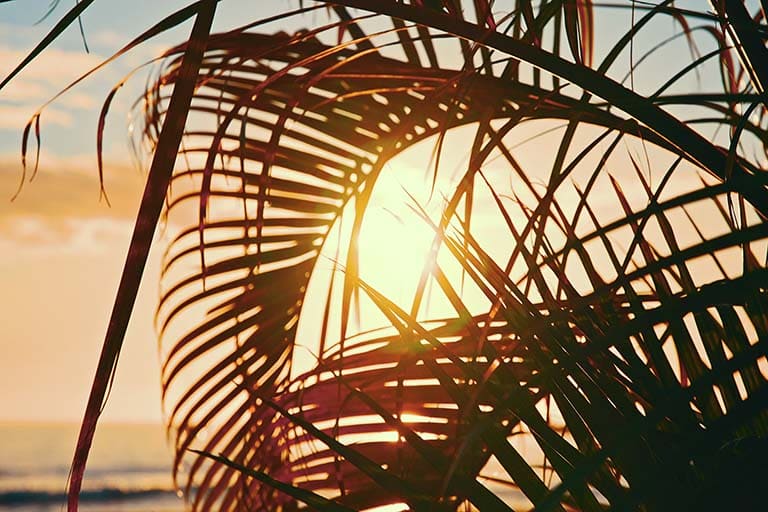
While weather patterns often change, here is a monthly breakdown of what Waikiki typically experiences in a year:
January:
One of the coldest months in the year with an average daily temperature of 80 degrees, and 65 degrees at night.
February:
Possibly the second coldest month of the year, with similar average temperatures to January, and slightly less rainfall.
March:
As the winter season starts to wind down, you will start to see more consistent trade wind days. With this brings increasing chances of sporadic rain showers.
April:
One of the mildest weather months for Waikiki. The rainy season gradually comes to an end and the temperatures have not yet reached the heat of the summer season.
May:
As the summer season approaches, the trade winds become more prevalent. The presence of incoming ocean swells attracts crowds of surfers to the south shore for the next coming months.
June:
This marks the beginning of hurricane season in Hawaii. Major storms during this time are rare, however it’s still important to be aware of potential weather threats.
July:
The trade winds tend to be the strongest, making it one of the windiest months of the year.
August:
This is likely to be the hottest month of the year, with an average daily temperature of 88 degrees, and 74 degrees at night.
September:
The warm temperatures of summer start to decline slightly. The winds begin to calm down as the state prepares to enter its final month of summer.
October:
As the temperatures drop slightly, Hawaii slowly enters its rainy season. Showers are usually light and occur throughout the evenings.
November:
Hurricane season in Hawaii continues through the end of this month. You may start to see more Kona wind days throughout the remainder of the winter months.
December:
This is considered as possibly one of the rainiest months of the year, with an average of 2.55 inches of rain.
Best Time to Visit Waikiki Based on Weather
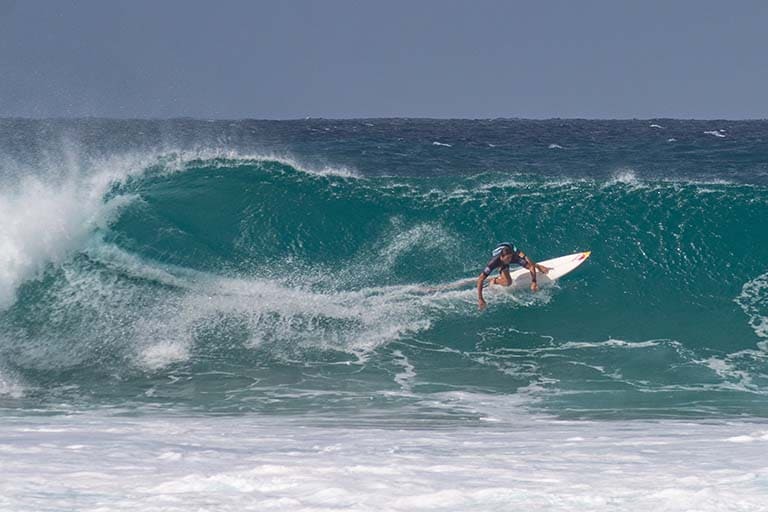
Waikiki sees its best weather days around the changing of the summer and winter seasons. This means April, May, September, and October are ideal months to visit.
Interestingly enough, these months overlap with Hawaii’s off-season for travel. It doesn’t get any better than prime Hawaii weather with minimal crowds!
What to Pack for Different Weather Conditions in Waikiki
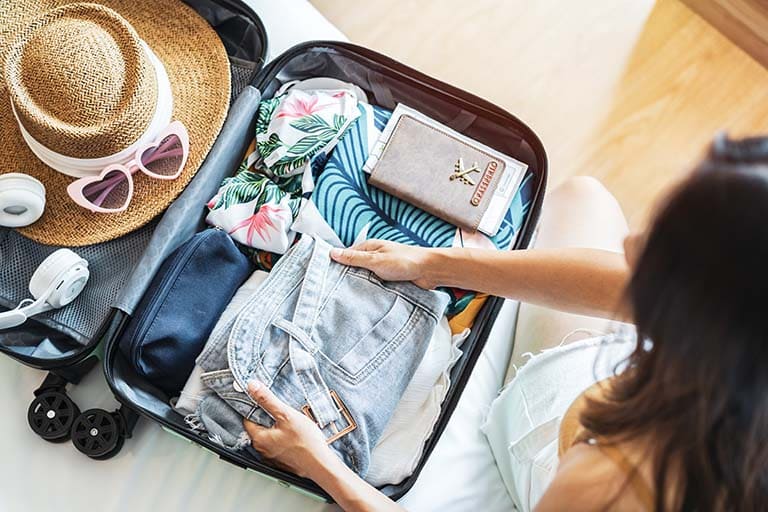
Considering the mild variance in Waikiki’s climate, you won’t need to worry about overstuffing your suitcase with unnecessary items. In general, your clothing should be lightweight and breathable for comfort in Hawaii’s warm weather.
The following are a few important articles to keep in mind while packing for your vacation.
Swimwear
To get the most obvious one out of the way, you will want to pack your swim suit for various water activities.
If you don’t have any, Waikiki is packed with shops offering garments and other accessories to have you beach-ready in no time.
Comfortable Footwear
You’ll want to pack a light pair of sandals for short trips to the beach or a brief shopping excursion.
A comfortable pair of covered shoes will prove to be useful for hikes or long walks. Be prepared for the rainy season, where dirt paths create slippery and muddy conditions.
Reef-Safe Sunscreen
With Hawaii’s close proximity to the equator, the UV index is higher compared to other places. Adequate sun protection is an essential item to have especially if you intend on spending time outdoors.
It’s important to note that Hawaii has a restriction on certain sunscreen ingredients in an effort to protect the surrounding reef and marine life.
If you have a reef-safe sunscreen, bring it along with you. Otherwise, it’s something you can obtain locally.
Light Jacket
If you plan to travel to Waikiki during the summer months, a light jacket should be enough to protect you from the sun or any chances of precipitation.
During the rainy seasons, an additional umbrella may come in handy in case of sudden downpours.
First Aid Kit
It’s best to have a medical supply kit readily available in the case of an unexpected minor injury.
You will probably be spending a lot of time outdoors, where you are exposed to a higher risk for common injuries.
Enjoying Waikiki’s Weather All Year Round
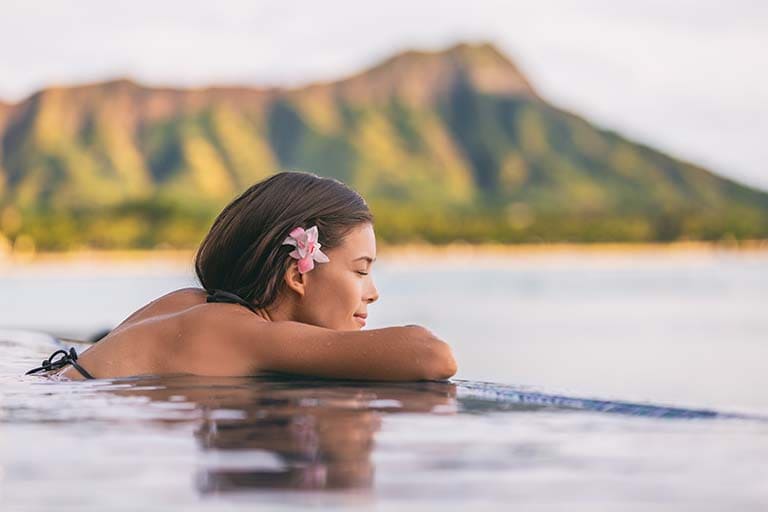
Waikiki experiences almost perfect conditions all year round, however it does see its bad days. Luckily, the bad days are minor and don’t usually last very long.
While weather can be unpredictable, as with anywhere else in the world, it is heavily dependent on the wind patterns. Ensure you are prepared for your Waikiki trip by packing the right items and traveling light.
Whether you choose to travel during the peak season or shoulder season, your chances of warm and sunny beach days are highly likely.
Nestled in Honolulu on the island of Oahu, the vibrant neighborhood of Waikiki is one of the world's top travel destinat[…]
The Hawaiian Islands have year-round spectacular weather but every once in a while there are rainy days! Have no fear, […]
Attending an event while visiting Waikiki can be a great way to get more out of your vacation, providing the chance to m[…]




